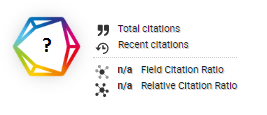EFEKTIFITAS PEMANFAATAN MATERIAL TERBUANG FLY ASH KOMPOSISI BAHAN TAMBAH PENGIKAT BATA BETON
DOI:
https://doi.org/10.46984/sebatik.v28i1.2440Keywords:
Material, Fly Ash, Volume, Bata Beton, Kekuatan TekanAbstract
Pemanfaatan fly ash sebagai material hasil sampingan industri menjadi fenomena yang berkembang dan memiliki potensi menjadi bahan tambah pengikat campuran beton dan sejenisnya seperti pasta, mortar, hasil sampingan industri merupakan limbah padat yang tidak dipakai lagi dan berasal dari hasil proses pengolahan, dan meningkatnya infrastruktur maka keperluan material konstruksi akan meningkat, tentunya akan berbading lurus dengan potensi pencemaran dan kerusakan lingkungan. Penambahan material terbuang dalam komposisi campuran bahan konstruksi tentu memiliki jumlah volume terukur, dan perlu dianalisa jumlah volume yang diperlukan dalam komposisi tersebut. komposisi campuran sangat dipengaruhi karakteristik material sehingga perlu pengujian melalui mekanisme laboratorium dengan cakupan pengujian berat jenis, berat isi, kadar lumpur dan lempung, hingga analisa komposisi jumlah bahan yaitu semen, pasir, fly ash, dan air, adapun analisa komposisi jumlah bahan menggunakan perbandingan berat. Guna mengetahui kinerja bata beton dengan bahan tambah pengikat fly ash maka dibuat variasi bata beton dengan komposisi 0%, 5%, 10%, 15% dan 20%, adapun umur rencana 3 hari, 14 hari, dan 28 hari dengan jumlah 45 sampel. Penelitian bertujuan mengetahui efektifitas pemanfaatan bahan tambah pengikat pada campuran, dengan membuat sampel sesuai standarisasi pembuatan bata beton dan parameter uji kekuatan tekan dan lebih utama yaitu memberi manfaat untuk mengurangi dampak terhadap tingginya produksi semen yang menghasilkan kerusakan lingkungan seperti debu, kebisingan, asap, krisis air, kerusakan tanah, udara, serta iklim.
References
Awolusi, T., Taiwo, A., Aladegboye, O., Oguntayo, D., & Akinkurolere, O. (2022). Optimisation of quinary blended supplementary cementitious material for eco-friendly paving unit using taguchi orthogonal array design. Materials Today: Proceedings, 65, 2221–2227. https://doi.org/10.1016/j.matpr.2022.06.263
Elahi, T. E., Shahriar, A. R., Alam, M. K., & Abedin, M. Z. (2020). Effectiveness of saw dust ash and cement for fabrication of compressed stabilized earth blocks. Construction and Building Materials, 259. https://doi.org/10.1016/j.conbuildmat.2020.120568
Hossain, M. A., Datta, S. D., Akid, A. S. M., Sobuz, M. H. R., & Islam, M. S. (2023). Exploring the synergistic effect of fly ash and jute fiber on the fresh, mechanical and non-destructive characteristics of sustainable concrete. Heliyon, 9(11). https://doi.org/10.1016/j.heliyon.2023.e21708
Jayaranjan, M. L. D., van Hullebusch, E. D., & Annachhatre, A. P. (2014). Reuse options for coal fired power plant bottom ash and fly ash. Reviews in Environmental Science and Biotechnology, 13(4), 467–486. https://doi.org/10.1007/s11157-014-9336-4
Ju, M., Rashid, K., Zafar, I., & Ltifi, M. (2023). Developing FA-based cementless binder composite by opting sustainable technology: Application of brick and paving block. Engineering Science and Technology, an International Journal, 48(June). https://doi.org/10.1016/j.jestch.2023.101580
Khan, M. A., Ayub Khan, S., Khan, B., Shahzada, K., Althoey, F., & Deifalla, A. F. (2023). Investigating the feasibility of producing sustainable and compatible binder using marble waste, fly ash, and rice husk ash: A comprehensive research for material characteristics and production. Results in Engineering, 20(September). https://doi.org/10.1016/j.rineng.2023.101435
Kumar, A., & Kumar, S. (2013). Development of paving blocks from synergistic use of red mud and fly ash using geopolymerization. Construction and Building Materials, 38, 865–871. https://doi.org/10.1016/j.conbuildmat.2012.09.013
Lankapati, H. M., Lathiya, D. R., Choudhary, L., Dalai, A. K., & Maheria, K. C. (2023). Modification and characterization of Mordenite zeolite derived from waste coal fly ash and its application as a heterogeneous catalyst for the n-butyl levulinate synthesis. In Catalysis Communications (Vol. 183). https://doi.org/10.1016/j.catcom.2023.106772
Mann, H. S., Brar, G. S., Mann, K. S., & Mudahar, G. S. (2016). Experimental Investigation of Clay Fly Ash Bricks for Gamma-Ray Shielding. Nuclear Engineering and Technology, 48(5), 1230–1236. https://doi.org/10.1016/j.net.2016.04.001
Mohamed, A. A. M. S., Yuan, J., Al-Ajamee, M., Dong, Y., Ren, Y., & Hakuzweyezu, T. (2023). Improvement of expansive soil characteristics stabilized with sawdust ash, high calcium fly ash and cement. Case Studies in Construction Materials, 18(November 2022). https://doi.org/10.1016/j.cscm.2023.e01894
Momoh, E. O., Osofero, A. I., & Menshykov, O. (2024). Design considerations for eco-friendly palm-strand reinforced concrete for low-cost housing. Case Studies in Construction Materials, 20(December 2023). https://doi.org/10.1016/j.cscm.2024.e02929
Olofinnade, O., Morawo, A., Okedairo, O., & Kim, B. (2021). Solid waste management in developing countries: Reusing of steel slag aggregate in eco-friendly interlocking concrete paving blocks production. Case Studies in Construction Materials, 14(2021). https://doi.org/10.1016/j.cscm.2021.e00532
Patil, S., Ramesh, B., Sathish, T., Saravanan, A., Almujibah, H., Panchal, H., Makki, E., & Giri, J. (2024). Evaluation and optimization of mechanical properties of laterized concrete containing fly ash and steel fiber using Taguchi robust design method. January 2023. https://doi.org/10.1016/j.aej.2023.12.009
Radenovic, D., Kerkez, D., Pilipovic, D. T., Dubovina, M., Seslija, M., Tenodi, S., & Pesko, I. (2024). The beneficial reuse of contaminated sediment: Long-term assessment of fly ash and lime-based mixtures. Case Studies in Construction Materials, 20(October 2023). https://doi.org/10.1016/j.cscm.2023.e02711
R, S. R., Arulraj, G. P., Anand, N., Kanagaraj, B., & Lubloy, E. (2024). Developments in the Built Environment Influence of Nano-Fly Ash on mechanical properties , microstructure characteristics and sustainability analysis of Alkali Activated Concrete. 17(February). https://doi.org/10.1016/j.dibe.2024.100352
Shah, S. H. A., Ali, B., Ahmed, G. H., Tirmazi, S. M. T., El Ouni, M. H., & Hussain, I. (2022). Effect of recycled steel fibers on the mechanical strength and impact toughness of precast paving blocks. Case Studies in Construction Materials, 16(March), 1–11. https://doi.org/10.1016/j.cscm.2022.e01025
Silva, W. B. C., Barroso, S. H. A., Cabral, A. E. B., Stefanutti, R., & Picado-Santos, L. G. (2023). Assessment of concrete road paving blocks with coal bottom ash: Physical and mechanical characterization. Case Studies in Construction Materials, 18(March). https://doi.org/10.1016/j.cscm.2023.e02094
Sogabe, T., Shoji, Y., Miyashita, N., Farrell, D. J., Shiba, K., Hong, H., & Okada, Y. (2023). Next Materials. 1(April).
Souto, M. A., Delesky, E. A., Foster, K. E. O., & Srubar, W. V. (2017). A mathematical model for predicting the carbon sequestration potential of ordinary portland cement (OPC) concrete. Construction and Building Materials, 147, 417–427. https://doi.org/10.1016/j.conbuildmat.2017.04.133
Syahrul, S. (2022). Kinerja Beton Mengandung Agregat Kasar Daur Ulang Limbah Bongkahan Beton. Jurnal Riset Rekayasa Sipil, 6(1), 33. https://doi.org/10.20961/jrrs.v6i1.63206
Syahrul, S., & Amir. (2023). ANALISA NILAI KONVERSI MUTU BETON PENGUJIAN. 27(2), 472–479. https://doi.org/10.46984/sebatik.v27i2.2407
Tran, V. M., Nguyen, L. T., & Nguyen, T. H. Y. (2022). Enhancing the effectiveness of steam curing for cement paste incorporating fly ash based on long-term compressive strength and reaction degree of fly ash. Case Studies in Construction Materials, 16(March). https://doi.org/10.1016/j.cscm.2022.e01146
Udawattha, C., Galabada, H., & Halwatura, R. (2017). Mud concrete paving block for pedestrian pavements. Case Studies in Construction Materials, 7(March), 249–262. https://doi.org/10.1016/j.cscm.2017.08.005
Wang, C., Kayali, O., & Liow, J. L. (2021). The effectiveness and mechanisms of superplasticisers in dispersing class F fly ash pastes. Powder Technology, 392, 81–92. https://doi.org/10.1016/j.powtec.2021.06.054
Wang, X., Chin, C. S., & Xia, J. (2023). Study on the properties variation of recycled concrete paving block containing multiple waste materials. Case Studies in Construction Materials, 18(October 2022). https://doi.org/10.1016/j.cscm.2022.e01803
Downloads
Published
How to Cite
Issue
Section
License
Copyright (c) 2024 Syahrul Syahrul, Amir Amir

This work is licensed under a Creative Commons Attribution 4.0 International License.
Authors retain all their rights to the published works, such as (but not limited to) the following rights; Copyright and other proprietary rights relating to the article, such as patent rights, The right to use the substance of the article in own future works, including lectures and books, The right to reproduce the article for own purposes, The right to self-archive the article








